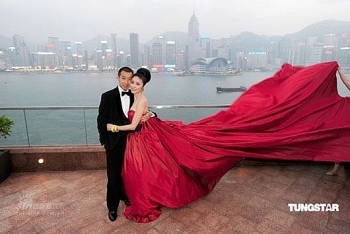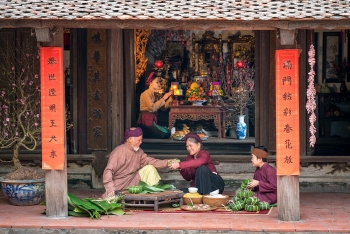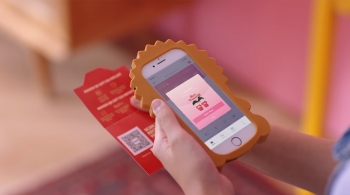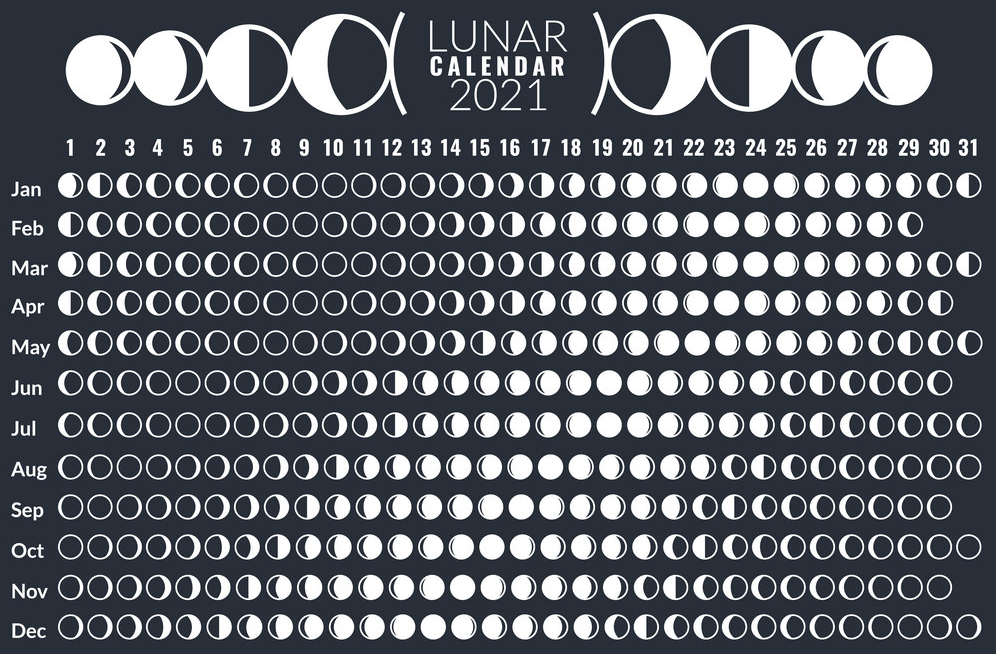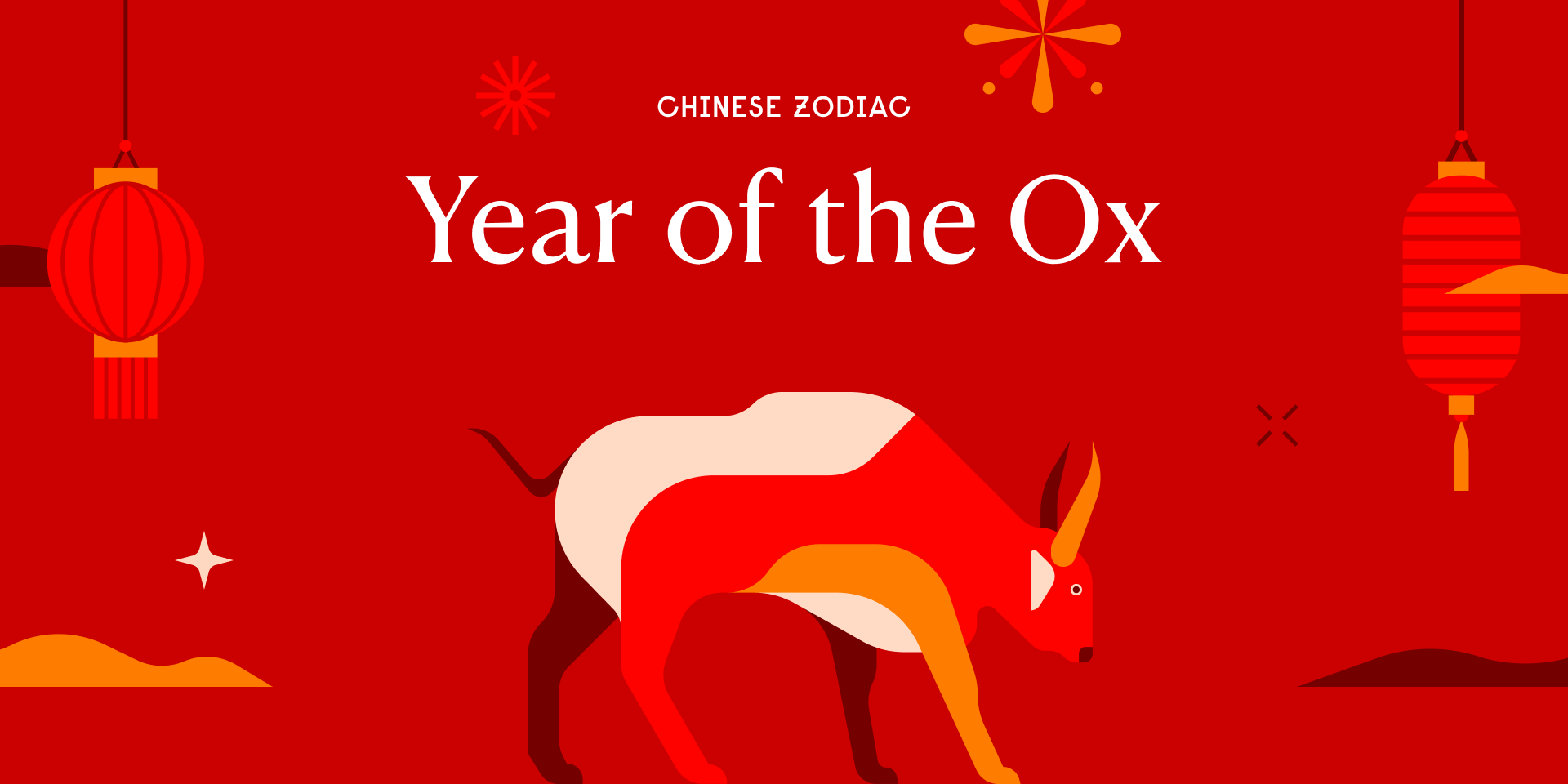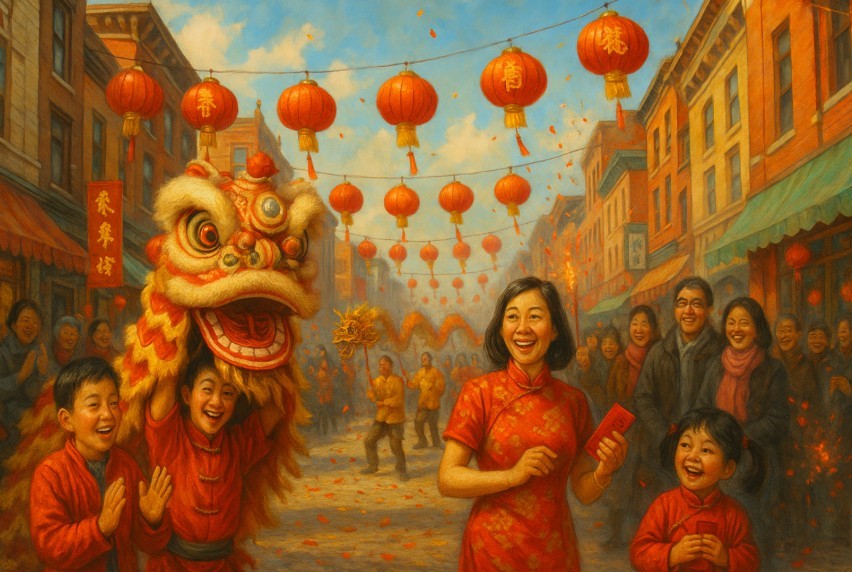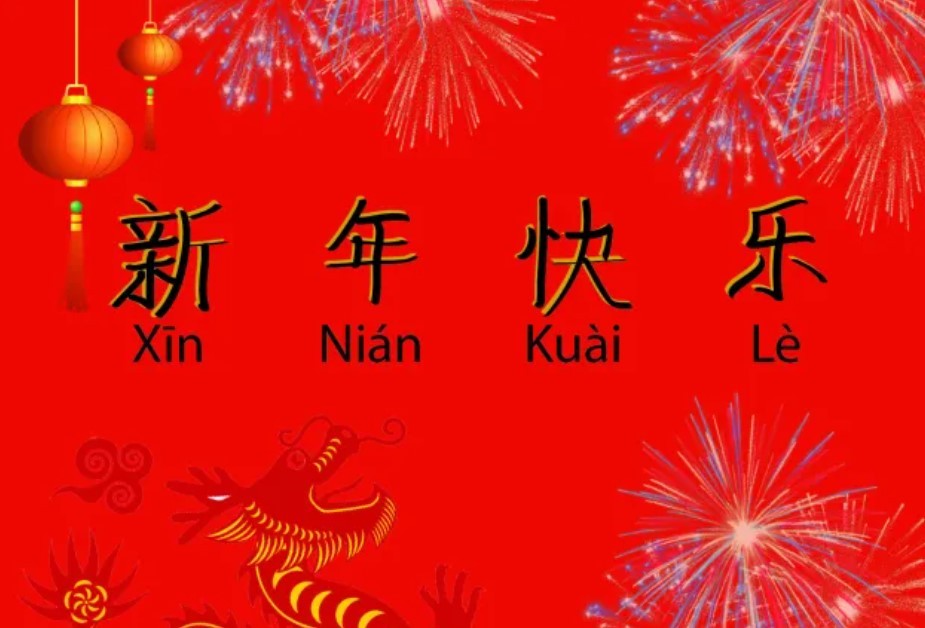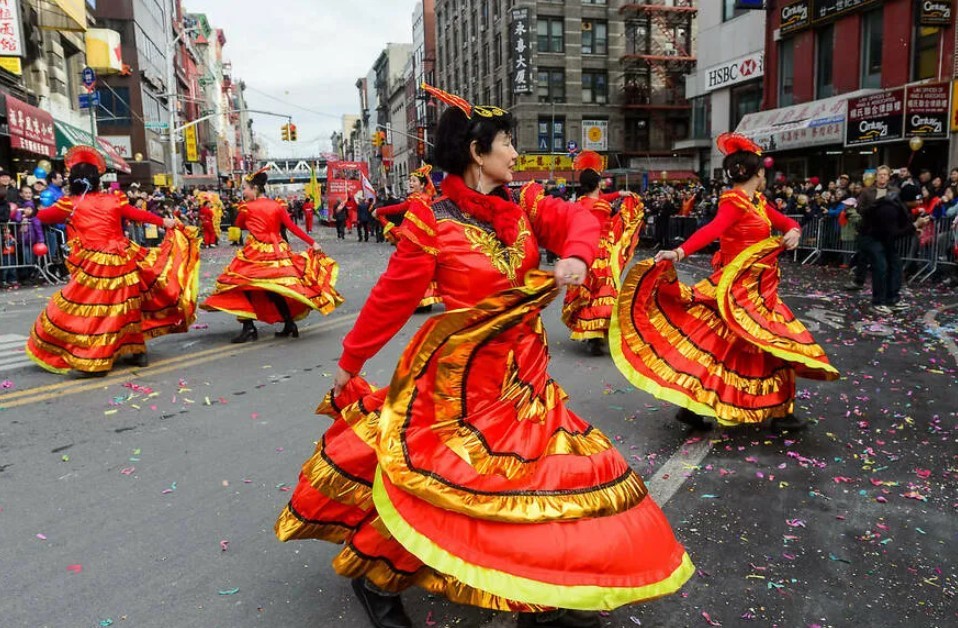How to Celebrate Lunar New Year Virtually in China, Vietnam, South Korea and Laos
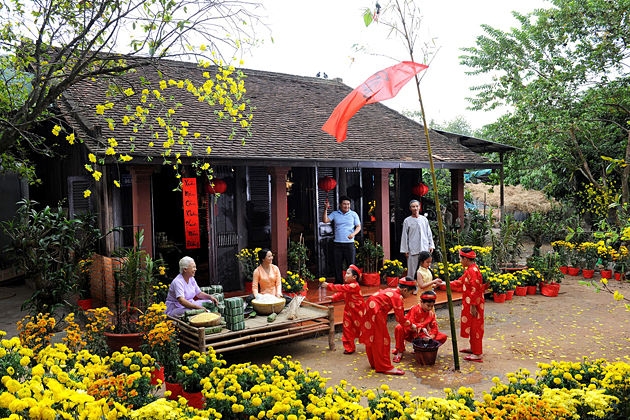 |
| Tet in Vietnam. Photo: Viet Travel Vision |
The Chinese aren’t the only ones celebrating this prosperous holiday this time of year. It is called Chunjie in China, Tet in Vietnam and Seollal in Korea.
Discover how Asian communities celebrate the auspicious occasion according to their unique traditions.
Vietnam
Tet Nguyen Dan or Tet is the most important and popular holiday and festivalin Vietnam. It is the Vietnamese New Year marking the arrival of spring basedon the Lunar calendar. As per other festive celebrations, there are a lot of customs practised during Tet like visiting a person’s house on the first day of the new year (xông nhà), ancestral worship and giving “lucky money” to children. The weeks leading up to the actual celebration are as bustling as the New Year Day itself.
Naturally, the streets and markets are full of people. As the shops will beclosed during Tet, everyone is busy getting their shopping done. Vietnamese homes usually have a family altar to pay respect to their ancestors. Five fruit variations called Ngũ Qu are placed on the altar. Traditionally, the three kitchen guardians for each house return to heaven on the 23rd day of the 12th month ofthe lunar calendar to give their yearly “assessment” on family members to theJade Emperor. Their departure is marked by a modest ceremony where thefamily offers sacrifices for them to use on their journey, as reported by Unreserved.
Vietnam's New Year Traditional Foods
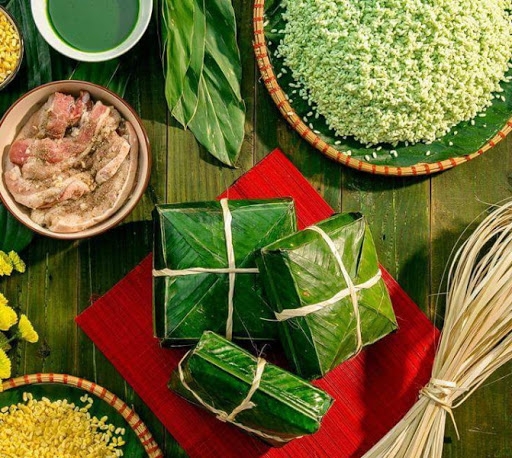 |
| Photo: Viet Culinary Travel Agency |
Banh Chung (Chung cake) is a traditional and irreplaceable cake of Vietnamese people in the Tet Holidays – the Lunar New Year of Vietnam. For the Vietnamese, making Banh Chung is the ideal way to express gratitude to their ancestors and homeland.
In the traditional conception of Vietnamese people, the process of making Chung cake is the opportunity for the family to come together. Sitting around the warm fire, all members of the family tell one another stories of the past and are ready for a New Year with wishes of best things.
Nowadays, in some big cities, the business lifestyle of modern society prevents people from preparing the cake, however, the habit of ancestor worship with Chung cake never changes. It is evidence of the Vietnamese loyalty and deep gratitude to ancestors.
China
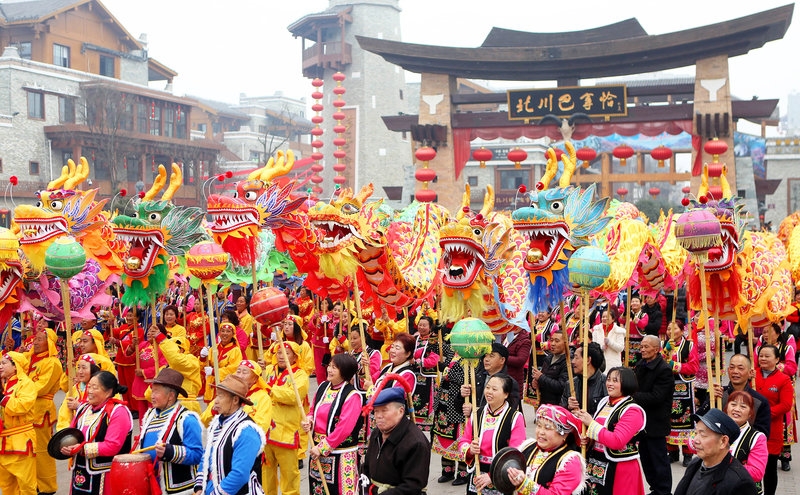 |
| Photo: NPR |
Chinese New Year is an important traditional Chinese holiday, celebrated at the turn of the Chinese lunar calendar. In China, it is also known as the Spring Festival, the literal translation of the modern Chinese name.
The Spring Festival is the most important festival for Chinese family members as it is the time that they will all gather together, like western families at Christmas.
Chinese New Year celebrations traditionally run from New Year’s Eve, the last day of the last month in the Chinese calendar, to the Lantern Festival on the 15th day of the first month, making the festival the longest in the Chinese calendar. Before the New Year comes, the people completely clean the inside and outside of their homes, as well as their clothes, bedclothes and all their cooking utensils.
Many people clean their homes to welcome the Spring Festival. They put up red posters with poetic verses on the back of their doors, New Year pictures on their walls and decorate their homes with red lanterns.
In the evening of the Spring Festival Eve, many people set off fireworks and firecrackers, hoping to cast away any bad luck and bring forth good luck. Children often receive “lucky” money. Many people wear new clothes and send greetings to each other.
Various activities such as beating drums and striking gongs, as well as dragon and lion dances, are all part of the festivities. Food is very important to Chinese people particularly on this occasion. New Year foods are not only delicious, but also steeped in tradition.
The New Year's Eve dinner is the most important dinner of the festival for the Chinese. Normally, this is the family reunion dinner, especially for those with family members away from home and as a result it is usually eaten at home and not in a restaurant. Fish will normally be served as well as dumplings, the most important dish in Northern China. Both of these dishes represent prosperity. Other dishes are selected depending on personal preference.
China's New Year Traditional food
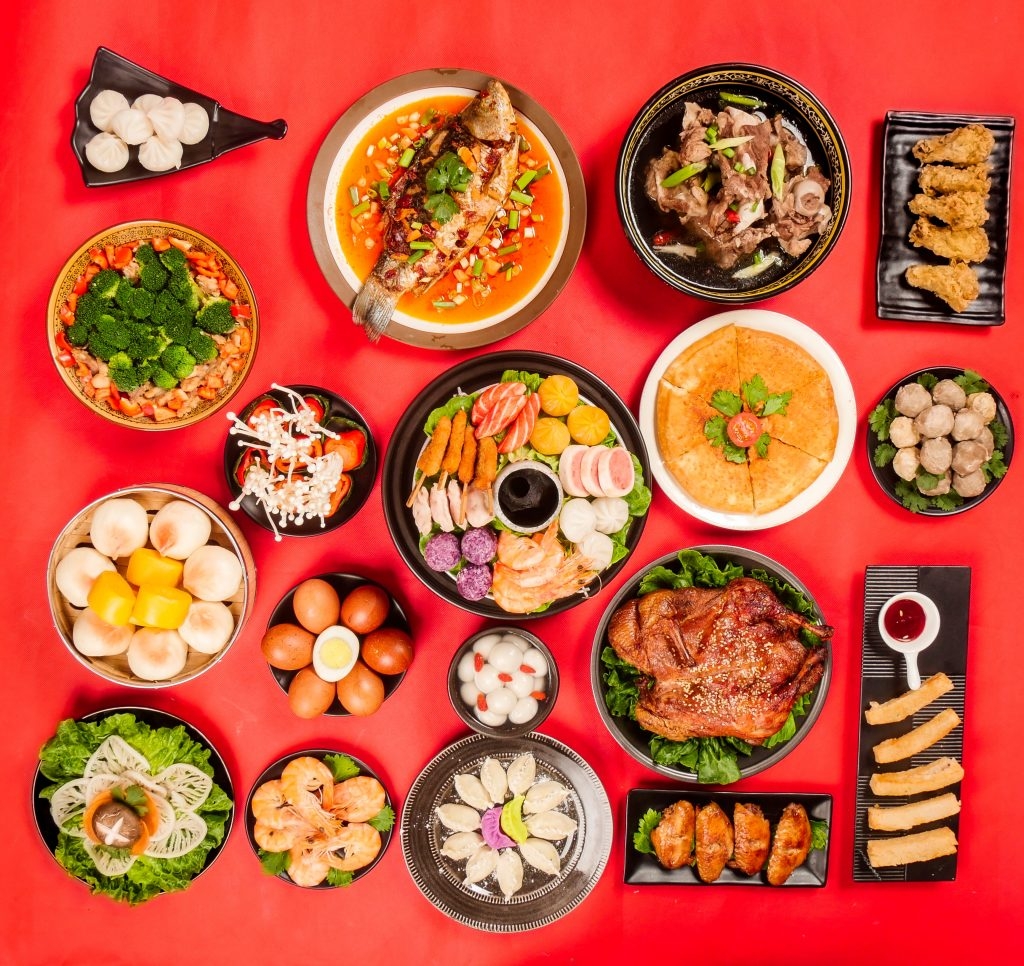 |
| Photo: Hashtag Legend |
Jiaozi (Dumplings): Wealth, Dayu Darou (Whole Fish or Meat): An Increase in Prosperity, Changshou Mian (Longevity Noodles): Happiness and Longevity, Tang Yuan (Glutinous Rice Balls in Sweet Syrup): Family Toge are traditional foods for New Year celebrations in China.
Food holds a special significance in Chinese culture, and it is no surprise that certain dishes play a significant role in New Year celebrations.
Hong Kong
 |
| Photo: Tripsavvy |
Wong Tai Sin Temple is a well-known shrine and major tourist attraction in Hong Kong. On Chinese New Year’s Eve, thousands of worshippers wait outside the temple before midnight and rush to the main altar to offer the deity Wong Tai Sin their glowing incense sticks when the new year dawns. Tradition has it that the earlier they offer the incense, the better luck they will have that year. This practice isn’t limited to those with strong religious faith; those who don’t still flock there yearly.
Sik Sik Yuen, the temple’s operator, has even launched an android app to help regulate the huge influx of visitors. In 2017, they decided to move the incense burner two metres closer to the entrance of the main temple hall, making it easier for visitors to offer incense.
In the same year, the popular temple also introduced a new electronic fortune stick-reading system. Each stick drawn includes a radio frequency identification tag, and people can put the stick on a reader to check their fortunes. This, however, has been underutilised as many still prefer the traditional way of seeking their fortune from a fortune-teller instead of receiving their fate from a machine.
Laos
The first day is the last day of the old year. Perfume, water and flowers are prepared for the Lao New Year. In temples all over the country, Buddha images are taken down from their permanent places and placed on special temporary easy-to-access places within the wat (temple) compounds so villagers can pour perfumed water on them. They then collect the water that runs off the Buddha images and take it home to pour on family members, friends and relatives. This is believed to bless, clean and purify the receivers before entering the Lao New Year.
The second day of the Lao New Year festival is the "day of no day", a day that falls in neither the old year nor the new year. Houses and villages are properly cleaned on the second day. Traditionally elders will not allow young people to take nap or stay still on the second day as it’s believed that if one sleeps or stays still one will get sick in the coming year.
They encourage young people to clean their places and go out to pour water on other elders in the village and wish them well, and finally get wet themselves. This is a way to clean and send bad things away with the old year.
The last day of the festival marks the start of the new year. This day many families will hold a Baci at their houses to welcome Lao New Year as well as to wish their elders good health and long life. Some might respectfully ask for forgiveness from their elders for things that they did in the past year that might have hurt their feelings unintentionally. And at the same time, they give the elders gifts.
In the late afternoon or evening of the last day, in the temples, the Buddha images are moved back to their permanent homes. On that same evening, devotees go to wats to listen to the monks chanting as an act to ask for forgiveness from the monks as well as from the Buddha images for what they did (pouring water on them) in this past few days that might have accidentally touched them (monks and Buddha are not to be touched). After that, a vien tien – a candlelight procession – takes place around the wat and that is the end of the Lao New Year celebration, according to Best Country.
Laos' New Year Traditional Foods
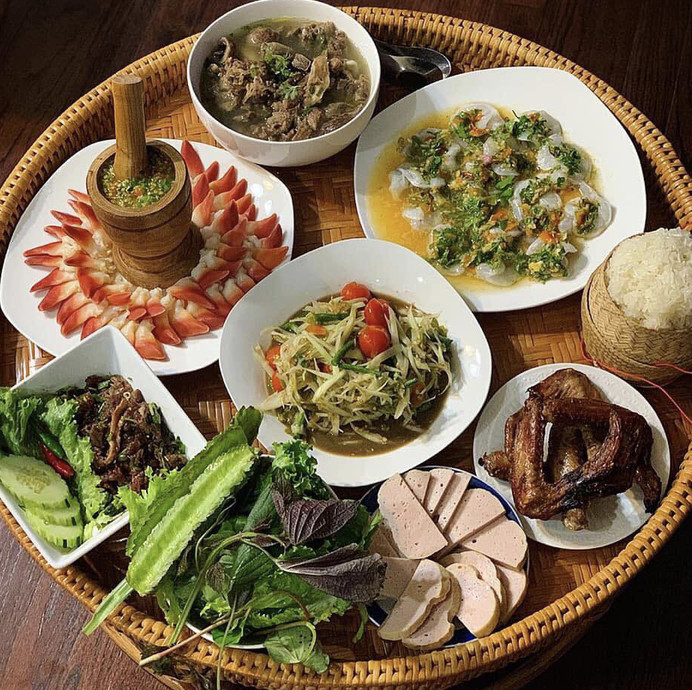 |
| Photo: Saeng's kitchen |
The most famous Lao dish is Laab, a spicy mixture of marinated meat and/or fish that is sometimes raw with a variable combination of herbs, green and spices.
“Laab” means fortune or luck in the Lao language. Thus, laab is an indispensable item on serving trays at nearly every family reunion or festive occasion, and especially the festivities around the traditional Lunar New Year.
Laab is a simple dish made from minced beef, venison, or sometimes buffalo or fish, mixed with vegetables and spices. It is very popular here and Lao people consider it to be the soul of the party for events around holidays and the New Year.
Lao people eat Laab in daily meals with sticky rice. On the New Year holiday, families exchange New Year’s wishes along with laab. The variety of ingredients and rich taste makes laab not only attractive in daily cuisine, but also popular on all special occasions, from simple parties to formal death anniversaries or holidays, according to DangCongSan.
South Korea
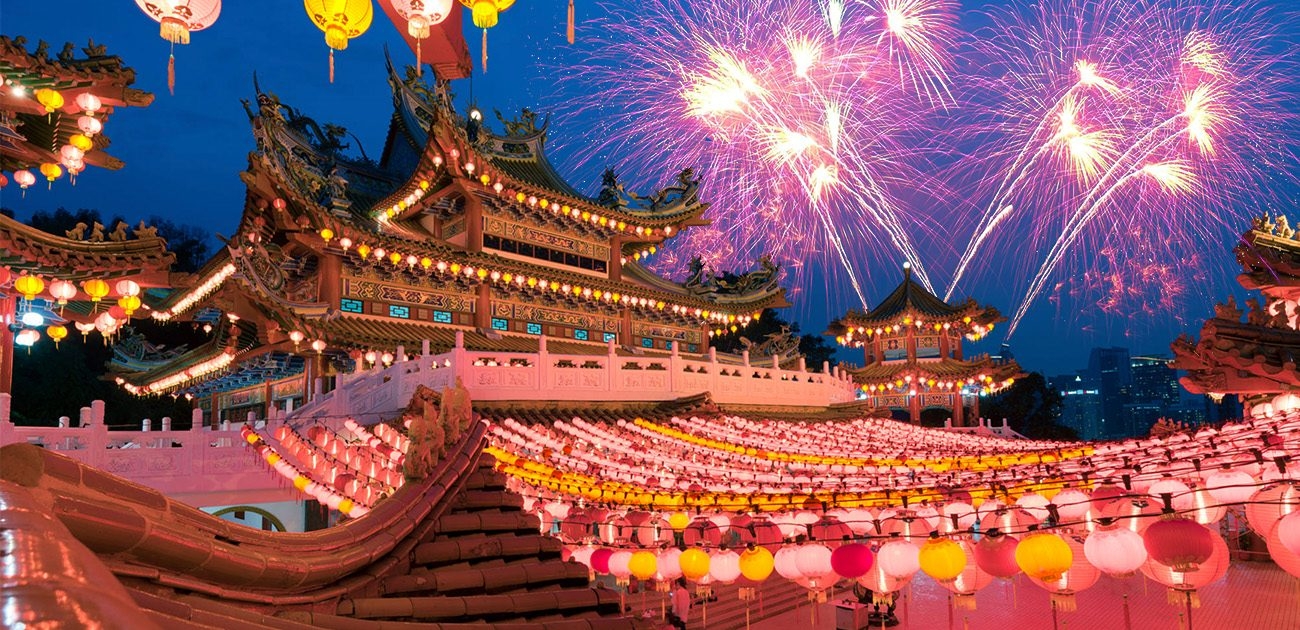 |
| Photo: FlyKLIA |
Jeongwol Daeboreum is an ancient Korean festival that celebrates the first full moon after Seollal, Korea’s Lunar New Year. The festival is rooted in Korea’s agricultural history. Back then, it was traditionally celebrated to encourage good harvests, fertile fields, health and a prosperous year ahead.
Jeongwol Daeboreum was briefly banned in the 1970s as part of a government fire prevention campaign. However, it was reinstated in 1997 due to popular demand and continues to be widely celebrated all over the country, including a number of locations in Busan.
The main focus of Daeboreum is the Daljip ritual. This is a huge bonfire made of straw or twigs. In Busan, the bonfires are built on beaches, as far away from buildings as possible. To replicate a “house” for the rising moon to enter, the Daljip is piled in a triangular shape. As the moon rises, the Daljip is set alight to wardoff evil spirits and bring luck for the coming year.
South Korea's New Year Traditional food
“Dduk mandu gook” is traditionally served on New Year’s Day because Koreans believe the whiteness of the dduk pieces symbolize good luck in the coming year. Dduk mandu gook is best served with spicy side dishes such as Napa cabbage kimchee (baechu kimchee) and cubed white radish kimchee (kkakdugi).
Ideas and events for Virtual Celebration
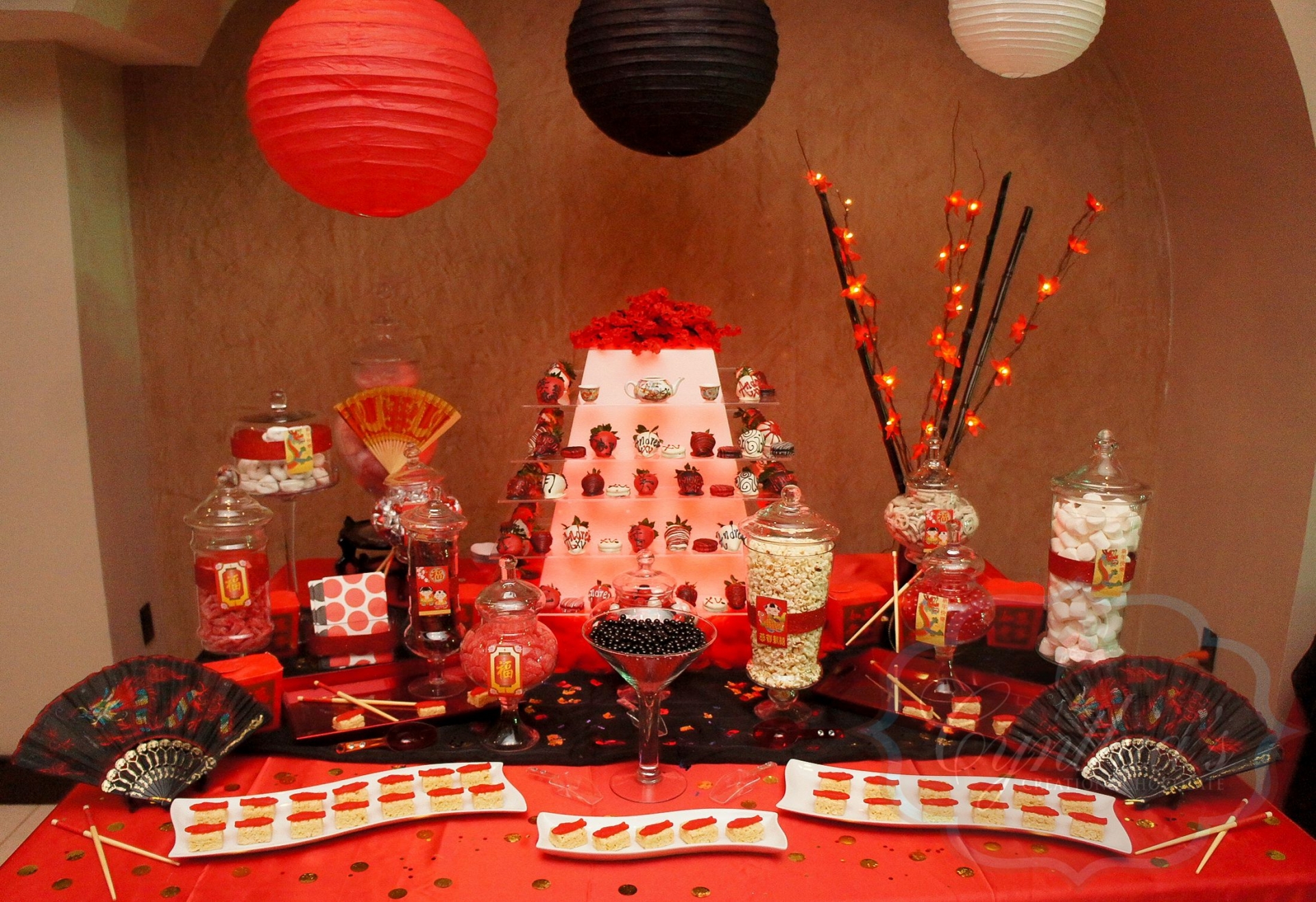 |
| Photo: Pinterest |
Decor
So much about Lunar New Year is about decor and setting the table. “If you find yourself not being able to go out to buy certain items or can’t make it to your family’s home, who may be the keepers of the decor, you can easily DIY your paper lanterns or the fortune cookies!” said Martinez. Dedicate a time during your virtual celebration to share your good fortunes, according to Forbes.
Lunar New Year Virtual Background
Virtual backgrounds allows guests to at least simulate being in the same location! “The family selects a virtual background in advance and each family member sets the background as their backdrop for the call, which can make everyone in attendance feel like they’re together,” said Courtney Ajinca, a Charlotte, North Carolina-based celebrity event planner.
Setting the Table
Serve citrus fruit. “Tangerines and oranges are displayed and exchanged between family and friends and eaten as they symbolize wealth and good luck,” said Martinez.
Display orchids. “The most popular Lunar New Year flower, the orchid, symbolizes abundance, luxury and refinement,” said Martinez. Set it up as the centerpiece on your dining table.
Red envelopes are usually filled with money and given to children or unmarried adults. “This year you might consider sending a digital card in which you can upload a personalized video with well wishes, send the recipient of your choice an e-gift card or a gift from Amazon to share the wealth,” said Martinez.
Gift Boxes
You may not be able to exchange presents in person, but Lunar New Year is a great excuse to send a care package. “For a virtual Lunar New Year celebration, send everyone involved a gift box with some red attire and underwear, good luck hangings and lisee (red envelopes),” said Jamie Chang, Owner and Event Planner for Mango Muse Events. It will get everyone in the festive mood and ensure good fortune and good luck. Don’t be shy about including a sweet treat while you are at it, too. For example, these See’s Candies Lunar New Year Dark Chocolates are so cute!
Virtual Cooking Classes
Virtual cooking classes have been very much the rage during the lockdown and picking one that makes a traditional Lunar New Year food can be perfect for the occasion. For example, on Friday, February 12, Top Chef Masters alum Anita Lo will be hosting a dumpling class on virtual cooking lesson platform 100 Pleats. Since dumplings are the same shape as ancient Chinese money, it became a ritual to eat them during Chinese New Year to wish good wealth for the coming year.
Menu
A big part of the Lunar New Year celebration are the foods and drinks. “Order and send the same items to everyone or cook and deliver them,” said Chang.
Or if you live in different areas send just the items that can travel like gau or tea and candied fruits and veggies. “It will give everyone a chance to partake in the same item together and celebrate together even though they're apart,” said Chang.
Lunar New Year celebrations are about tradition, so traditional dishes and drinks are what make the celebration. “Rice and jai, gau and tea with candied fruits and vegetables are the staples,” said Chang. They are good luck and represent wishes for a long, healthy, prosperous and sweet life, according to Forbes.
Ideas for some at-home celebrations
Play some of your favorite board games.
After going through a year filled with virtual classes and endless video calls, consider using this time to take a break from your phone or computer screen. Board games, which saw a boom this year thanks to Netflix hit The Queen’s Gambit, are a great way to connect with your family or roommates while staying at home. You can play classic games like chess or Monopoly, newer releases such as Villanous, or even mobile app-driven party games like Among Us.
Watch heartwarming Lunar New Year-themed movies and TV shows.
Since we are not able to physically ring in 2021 at popular locations like NYC’s Times Square, we might as well get into the festive mood by binging holiday films and shows at home. From New Year’s Eve to The Holiday, to all of the new year’s episodes of Friends, revisit some of your old favorites.
Hop on a video call with family and friends.
If you’re unable to spend time with your family this holiday due to the ongoing pandemic, schedule a Zoom call to wish each other a happy new year. From writing resolutions to playing virtual games, there are plenty of activities to enjoy together even if you are not physically in the same space.
At 2021 Virtual Lunar New Year Festival from February 11th to February 13th, Thursday to Saturday! Enjoy a broadcast of cultural dances, musical performances, crafts, and food demonstrations that showcase the breadth of Lunar New Year traditions across the world.
For sponsorship information, please visit www.ccchouston.org/LunarNewYear or email [email protected].
********
DAY 1 | February 11 | 4:00pm – 5:30pm

